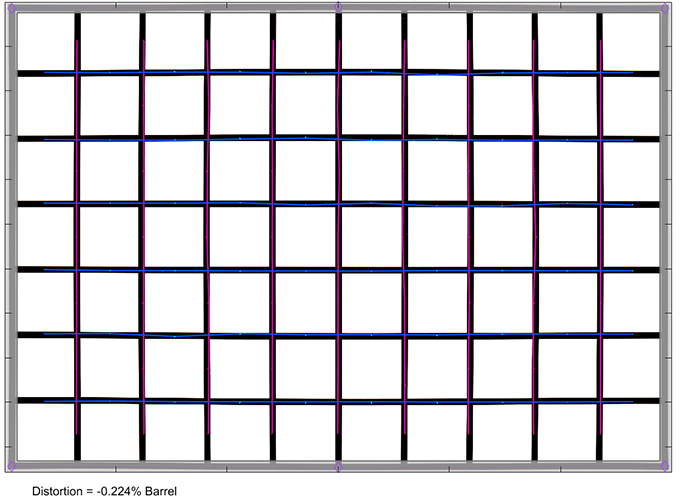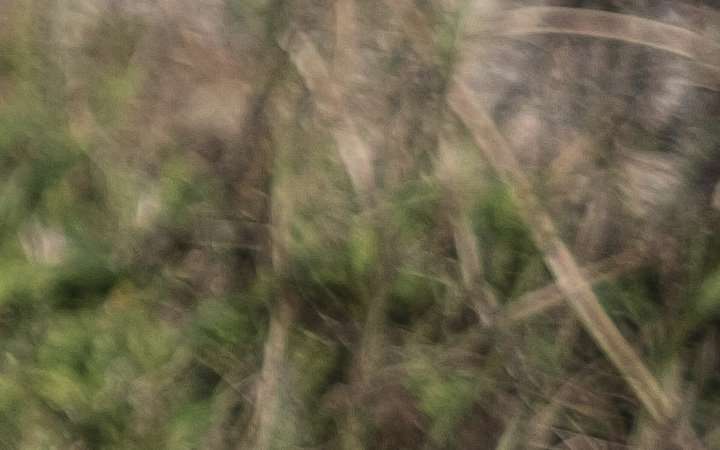|
Viltrox AF 23mm f/1.4 XF (Fujifilm) - Review / Test Report - Analysis |
|
Lens Reviews -
Fujifilm X
|
|
Page 2 of 3

Distortion
The Viltrox AF 23mm f/1.4 doesn't really require image auto-correction when it comes to image distortions. It produces a tiny barrel distortion of 0.2%. There's a mustage-style sub frequency in there but given the low base distortion, it's not really annoying.

Vignetting
The vignetting characteristic of the Viltrox lens is roughly in line with other high-speed lenses. At f/1.4, there's a quite heavy light falloff of 1.3EV (f-stops). Stopping down to f/2 helps but it's best to go for f/2.8 if you want to reduce the issue to a near-negligible degree of ~0.5 EV.
If you apply the Viltrox correction profile in Photoshop, the vignetting is almost fully compensated. In fact, it almost looks like that center is darker than the corner thereafter (Imatest probably doesn't show "negative" vignetting numbers here).

MTF (resolution)
The Viltrox AF 23mm f/1.4 has two souls when it comes to resolution. The broader center performance is decent at f/1.4 and more so at f/2 but the borders and corners are weak and the contrast is also slightly reduced. This changes at f/2.8. The center quality reaches an excellent level here and the outer image field improves substantially. The peak performance is reached between f/4 and f/5.6 where the borders/corners provide very good quality as well. Diffraction has a higher impact beyond but f/8 remains very usable whereas f/11 sees a higher decrease in resolution.
The field curvature is marginal. The centering quality of the tested sample was good.
Please note that the MTF results are not directly comparable across the different systems!
Below is a simplified summary of the formal findings. The chart shows line widths
per picture height (LW/PH) which can be taken as a measure for sharpness.
If you want to know more about the MTF50 figures you may check out the corresponding
Imatest Explanations

Chromatic Aberrations (CAs)
Lateral CAs are fairly high at a large aperture with a peak beyond 2px on the average at the image borders. However, in sync with the resolution the CAs improve substantially from f/2.8 onward.

Bokeh
If you are interested in such a lens, you do so because of the ultra-large aperture and its shallow depth-of-field potential - and the quality of the bokeh (rendering of the out-of-focus blur) becomes an important criterion.
The Viltrox lens isn't perfect in this respect but it has its merits. No pun intended but out-of-focus highlights are a highlight. The lens does not feature aspherical elements which is the type of special glass that tends to introduce artifacts. Thus highlights are very clean as you can see below. There's just a bit of an outlining effect. While the lens has 9 aperture blades, a slightly edgy aperture shape does show up at f/2 already though.
 The images below illustrate the deterioration of the out-of-focus highlights towards the image corners. Note: Please ignore the fuzzy shape of some discs - this is a side effect of the wide-angle character of the lens in conjunction with the protruding photodiodes of the test scene.
The highlight discs are intact in the broader center zone but they deteriorate towards the borders/corners of the image field - this is a mechanical vignetting effect that is pretty much unavoidable. The circular shape can be restored by stopping down but a complete correction requires a quite small aperture setting.
As far as the general blur is concerned, the Viltrox is, once again, Jekyll and Hide. Near the image center, as shown below, the fore- and background blur is quite smooth.
The images below illustrate the deterioration of the out-of-focus highlights towards the image corners. Note: Please ignore the fuzzy shape of some discs - this is a side effect of the wide-angle character of the lens in conjunction with the protruding photodiodes of the test scene.
The highlight discs are intact in the broader center zone but they deteriorate towards the borders/corners of the image field - this is a mechanical vignetting effect that is pretty much unavoidable. The circular shape can be restored by stopping down but a complete correction requires a quite small aperture setting.
As far as the general blur is concerned, the Viltrox is, once again, Jekyll and Hide. Near the image center, as shown below, the fore- and background blur is quite smooth.
 However, the characteristic is a bit more complex than that. The quality of the blur deteriorates sharply in the image corners. Below is a crop from one of our sample images (available for download on the next page). As you can see, this shows a very harsh bokeh here. Please note that this is a worst-case scenario here. You won't see this in all shallow depth-of-field scenes.
However, the characteristic is a bit more complex than that. The quality of the blur deteriorates sharply in the image corners. Below is a crop from one of our sample images (available for download on the next page). As you can see, this shows a very harsh bokeh here. Please note that this is a worst-case scenario here. You won't see this in all shallow depth-of-field scenes.
 Conversely, here's a buttery crop from the image center.
Conversely, here's a buttery crop from the image center.

Bokeh Fringing (LoCA)
Bokeh fringing - also referred to as LoCAs - is a color fringing effect on the Z-axis. It shows up as purplish halos in front of the in-focus zone and greenish beyond. The effect is clearly visible at f/1.4. Stopping down to f/2 reduces the fringing and there are traces left at f/2.8. As usual, the LoCAs are mostly gone from f/4 onward (not shown).
Keep in mind that bokeh fringing is normal in all but a handful of very expensive APO lenses.
|